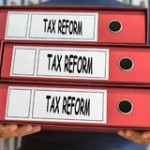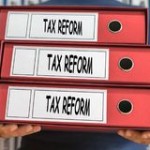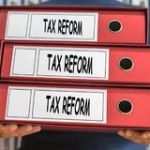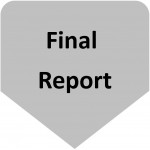In a letter, dated April 11, 2012, to IRS Commissioner Shulman , the ABA Section on Taxation requested additional guidance concerning the application of the debt-financed income rules when an exempt organization borrows funds to conduct charitable programs or pay administrative expenses either before or after purchasing investment property. The Section on Taxation proposed examples that illustrate how the debt-financed income rules apply in four contemporary fact settings.
, the ABA Section on Taxation requested additional guidance concerning the application of the debt-financed income rules when an exempt organization borrows funds to conduct charitable programs or pay administrative expenses either before or after purchasing investment property. The Section on Taxation proposed examples that illustrate how the debt-financed income rules apply in four contemporary fact settings.
Acquisition Indebtedness Defined
Under §514, acquisition indebtedness is:
- Debt incurred to acquire or improve property;
- Debt incurred before the acquisition or improvement of property, if the debt would not have been incurred but for the acquisition or improvement; or
- Debt incurred after the acquisition or improvement of property if the debt would not have been incurred but for the acquisition or improvement and incurring the debt was reasonably foreseeable at the time of the acquisition or improvement.
Thus, the scope of acquisition indebtedness is not limited to debt acquired simultaneously with an asset purchase, such as with a purchase money mortgage. Indebtedness incurred before or after the acquisition of an asset may be treated as acquisition indebtedness with respect to the asset if certain conditions are present. The applicable rules depend on whether the debt is incurred before or after the asset is acquired.
When debt is incurred before the acquisition of investment property, a “but for” test is applied. The indebtedness is acquisition indebtedness if the debt would not have been incurred but for the purchase of the property. When debt is incurred subsequent to a property acquisition, there is a two-fold test. The first part of the test is the same “but for” test applied when debt is incurred before the acquisition. The second part of the test asks whether having to incur the debt was reasonably foreseeable at the time of the purchase. These rules prevent exempt organizations from circumventing the debt-financed income rules by artificially timing incurrence of debt either before or after the acquisition of property.
Debt Incurred Before Property Acquisition
Reg. §1.514(c)-1(a)(2), Example (1) illustrates acquisition indebtedness incurred prior to the acquisition of investment property. An exempt organization pledges investment assets to secure a loan. Subsequently, the organization uses the borrowed funds to purchase property with a nonexempt use. The organization would not have borrowed the money but for the acquisition of the property. Thus, the loan is acquisition indebtedness and the purchased property is debt-financed property.
Compare the foregoing example with an example proposed by the Section on Taxation:
A an exempt school holds $ Z in money market funds in addition to the amount of working capital necessary to continue current operations. The organization needs approximately $ Z to construct a new classroom building. The current interest rates are quite low, and a lender is willing to provide a construction loan that will ultimately be converted into long-term loans secured by the new classroom building. Rather than using the $ Z in its money market funds, the organization decides to take out a construction loan, secured by a general pledge of its assets, to finance the construction of its new building. After taking out the loan and beginning the project, the organization is presented with an attractive investment opportunity that it did not foresee at the time of the borrowing, and it decides to use funds from the money market account to make that investment.
The Section of Taxation correctly distinguishes its example from Example (1) of Reg. §1.514(c)-1(a)(2). In the example from the regulations, the exempt organization secures a loan but does nothing with the loan proceeds until it purchases the new nonexempt property. We are given no reason why the organization would borrow funds other than to make the subsequent purchase. The organization would not have borrowed the funds but for the purchase of the new property. In contrast, the ABA example gives the exempt organization an independent reason for financing the new classroom facility. Given the current interest rates, it makes business sense to finance the building rather than use the money market funds for the construction. The organization would have borrowed the funds even if the subsequent investment opportunity had not surfaced. Thus, there is no “but for” connection between the loan and the investment.
Debt Incurred After Property Acquisition
Example (2) of Reg. §1.514(c)-1(a)(2) illustrates acquisition indebtedness incurred after the acquisition of investment property. An exempt scientific organization used its working capital to remodel an office building which the organization leases for a nonexempt use. Subsequently, the organization mortgages its laboratory to replace the funds it used to remodel the building. Because the mortgage is on exempt use property, the organization may feel like the debt is not acquisition indebtedness. Under the two-fold rule discussed above, however, the organization would not have mortgaged its lab but for the remodel of the office building. Moreover, because the organization used its working capital to remodel the building, it was reasonably foreseeable that it would have to incur debt in order to fund its charitable programs. Thus, the mortgage is acquisition indebtedness with respect to the office building.
In contrast, the Section of Taxation proposes the following scenario:
A charitable organization traditionally makes grants of $ X each year and funds those grants from interest, dividends, and capital gains on its investments. Due to increased need among the charitable class the organization serves, it decides to increase its grantmaking. In a particular year, interest, dividends and capital gains are insufficient to enable the organization to increase its grants and pay its administrative expenses. The Trustees reasonably determine that it would not be advantageous to liquidate any of the organization’s various investments at this time. On that basis, the Trustees decide to fund the organization’s grants and administrative expenses by borrowing from a line of credit secured by the organization’s existing investments. When the investments were purchased, the organization did not anticipate that it would later need to increase its grants at a time when its income was insufficient to fund its programs and when it was also reasonable to hold its investments rather than to liquidate them. Accordingly, any income from the existing investments will not generate UBIT solely because of the funds borrowed under the line of credit.
Once again, the example proposed by the Section of Taxation is distinguishable from the example in the regulations. In Example (2) of Regs. §1.514(c)-1(a)(2), the organization knew it would have to borrow funds for its charitable activities when it used working capital to renovate a nonexempt use building. In contrast, in the Section on Taxation example, the organization anticipated its charitable giving levels would remain consistent when it purchased the investments. Due to the recession, however, the needs of the beneficiaries it served increased, causing it to need more than anticipated in its exempt activities. It was the increased need, rather than the earlier purchase of the investments, that motivated the borrowing. Although the organization could have sold the investments rather than borrowing, it was advised not to sell the investments at a depressed value. Thus, neither part of the two-part test for later borrowing is satisfied. It was not the existing investments that motivated the organization to borrow funds for its charitable activities. Moreover, when the organization purchased the investments, it was not reasonably foreseeable that a need would later arise to step up its grantmaking.
Conclusion
The letter from the Section of Taxation to the Commissioner Shulman raises some practical factual settings that exempt organizations may be facing currently. The examples proposed in the letter are well thought out and consistent with the language of §514 and the examples in Reg. §1.514(c)-1(a)(2). If adopted by the IRS, the examples would be helpful to exempt organizations in the conduct of their exempt activities and investments.









